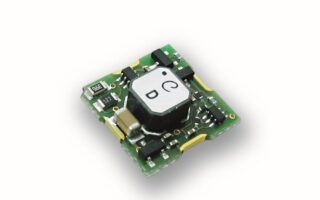In recent years, wireless technologies have established themselves as the preferred solution in both building automation and smart homes. These technologies offer more flexibility during planning and save on the cost and hassle of extensive wiring during installation. Furthermore, battery-free wireless solutions eliminate the need for ongoing maintenance, reducing operating costs.

Article by: Armin Anders, Co-founder & VP Business Development, EnOcean GmbH
In an intelligent building, sensors act as the nervous system capturing various data such as temperature, humidity, presence, or CO2 to intelligently control actuators. However, connecting these components can be cumbersome and expensive due to the need for wiring. Wireless solutions provide the required flexibility, especially during renovations. While some wireless solutions dependent on batteries require intensive maintenance, are more expensive, and create hazardous waste, those without batteries offer significant advantages.
Maximizing flexibility with wireless
When it comes to integrating numerous sensors and switches into a system, wired solutions are impractical. It’s costly and inflexible to connect each sensor with its own wire. Wireless systems offer a solution. Sensors for presence, temperature, air quality, light, as well as switches or smoke detectors can be placed exactly where they are needed without the constraint of cables. The strength lies in the ability to expand the system with new products and additional sensors without the need to break walls.
Wireless sensors and switches minimize coordination among various trades and reduce the interference in existing building structures. For instance, when repurposing an office building, there’s no need to break walls for cabling or place power lines inconveniently. This saves costs and is more appealing to building owners or future occupants.
Sustainable operations without batteries
A significant drawback of some wireless solutions is their dependence on external power sources or batteries for the energy required for sensors and communication. This results in increased maintenance costs and environmental concerns. In practice, batteries often deplete faster than their theoretical lifespan and need to be replaced by professionals annually. The replacement of batteries not only involves labour but also environmental considerations since batteries are hazardous and must be disposed of properly. With a large number of wireless sensors – in an office building, this can quickly amount to several thousand – the process of battery replacement and disposal can easily become a full-time job for a facility manager, from access coordination, device localization, battery exchange, device testing, documentation, battery storage, and finally to disposal.
Energy harvesting
Modern systems leverage battery-free wireless components, offering a reliable and maintenance-free alternative to traditional wired solutions while retaining the flexibility and easy retrofitting of wireless systems. Products with battery-free wireless technology harness the energy available in their immediate surroundings—a concept known as energy harvesting. Three main forms of energy harvesting have emerged in building automation: kinetic, solar, and thermal energy.
Kinetic energy

ECO 200 is an energy converter for linear movement. Possible applications include miniaturized switches and sensors in building technology and industrial automation.
Motion is a dependable energy source for various switches. A single press generates enough energy for three wireless messages. An electromechanical energy converter (EnOcean ECO 200) inside the switch housing converts the button press into electrical energy, making it available immediately after activation. The energy converter works similarly to a bicycle dynamo, where a small but powerful magnet drives a magnetic flux through two magnetically conductive anchor plates, which closes in a U-shaped core. An induction coil is wound around this core, which can be put in two positions where it touches the respective opposing anchor plates. This movement results in a sudden change in the magnetic field, thereby producing a voltage pulse in the induction coil.
A single switch actuation generates an energy amount of 120 µWs, sufficient for three radio messages. At room temperature the electromechanical energy converter allows over a million switching cycles. The principle of kinetic energy harvesting can also be used for light or blind switches. Additionally, there are battery-less sensors that can warn of water damage. These sensors have swell disks at the bottom that expand when they come into contact with a liquid. This movement triggers the electromechanical converter and sends a radio signal. Due to this message, the line’s valve automatically closes, and the building owner or facility manager receives a corresponding notification, for example on their smartphone.
Thermal energy

With the DC/DC converter ECT 310 Perpetuum, battery-free radio modules can also use heat as a power source. In this process, heat – for example, from warm machine parts, radiators, or the human body – is converted into electrical current.
A significant temperature difference, for instance, between a radiator and its surroundings can provide a lot of energy that can be used not only for sensors but also for actuators. Energy harvesting is done using a Peltier element in combination with a DC/DC converter (EnOcean ECT 310 Perpetuum). Even a small input voltage of 20 millivolts (mV), which corresponds to a temperature difference of about 2 °C, can be converted into a usable output voltage of over 3 V. The larger the temperature difference, the more energy can be harnessed. This principle is currently mainly used in radiator actuator drives. The energy harvested is sufficient for both radio communication and the actuation changes of the valve. Combined with a solar-powered room sensor, a fully energy-autonomous individual room control can thus be realized.
With the DC/DC converter ECT 310 Perpetuum, battery-free radio modules can also use heat as a power source. In this process, heat – for example, from warm machine parts, radiators, or the human body – is converted into electrical current.
Products with EnOcean technology utilize, among other things, three different frequency bands that vary depending on the region: 868 MHz in Europe, 902 MHz in North America, and 928 MHz in Japan. Short messages (telegrams) are used for data transmission. These can be verified by the central system using a checksum. Due to the short duration of the telegrams (about one millisecond) and multiple telegram transmissions, the risk of data collisions is minimized. Interference with other systems such as WLAN or DECT is ruled out since frequencies outside the 2 GHz frequency band used by these devices are employed. The range is up to 30 meters within buildings, even through walls, and can also be further improved using repeaters. Communication between devices is secured with a 128-bit AES encryption, and the use of rolling codes prevents unauthorized tampering.
Solar-based energy

Miniaturized solar modules enable maintenance-free window contacts, temperature, gas, and humidity sensors, as well as light sensors and presence detectors.
Thanks to miniaturized solar modules, it’s possible to power radio modules with electricity even with low interior light intensity. Solar-powered sensor modules operate extremely energy efficiently. A temperature reading that is to be transmitted every 15 minutes requires only 3.6 hours of charging time per day at a brightness of 200 lux for uninterrupted operation. At this brightness, the solar cell produces a voltage of 3 V.
An additional Poly Acenic Semiconductor (PAS) charging capacitor ensures that the module can bridge periods without ambient energy. When the energy storage is fully charged, the module can operate in complete darkness for about a week without interruptions.
Wireless, maintenance-free, smart technology
Manufacturers worldwide have developed thousands of smart products based on battery-free EnOcean wireless technology, such as room thermostats, wireless window contacts, and solar-powered presence detectors. These products not only increase the energy efficiency of a building but also offer high flexibility since no wiring is required for installation. This reduces installation costs and enhances comfort, as the wireless switches can be placed anywhere desired. Another significant advantage is interoperability, as all EnOcean-based products can communicate with each other, irrespective of the manufacturer.
Conclusion
Intelligent buildings, with their energy-saving capabilities and enhanced comfort, are already a reality. By using battery-free wireless technologies, installation costs can be significantly reduced. It’s crucial to choose systems with open standards and flexible ecosystems to ensure future-proofing and avoid potential pitfalls of short-term cheaper alternatives. With the flexibility of these solutions and open interfaces, smart buildings can adapt to the unique needs of their tenants.







